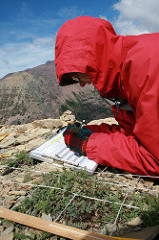Careers in science and engineering
By Mary Bigelow
Posted on 2018-05-09
The April edition of NSTA’s Science Scope includes the article Classic Lessons 2.0: What kind of person becomes a scientist?
Some teachers have used the draw-a-scientist activity to ascertain the (mis)conceptions students have about who scientists are and what they do. It’s encouraging to read studies such as U.S. Children Are Drawing Female Scientists Now More Than Ever and What We Learn From 50 Years of Kids Drawing Scientists
 As the Science Scope Editor notes, “It is important that students are aware of the careers available to them and to have experiences that mirror the tasks a scientist performs when doing research and conducting experiments.”
As the Science Scope Editor notes, “It is important that students are aware of the careers available to them and to have experiences that mirror the tasks a scientist performs when doing research and conducting experiments.”
Unfortunately, our students may not be familiar with the variety of career opportunities in the 21st century. (Indeed, may of our students will participate in careers that don’t exist right now!)
For students of any age who are interested in careers in science and engineering, NSTA’s The Science Teacher features a “Career of the Month” column. This two-page article includes interviews with professionals who use science in their work, a description of the job (work overview, career knowledge, and skills), and career advice in a student-friendly, easy to read format.
Here is a sample of careers described in the 2013-2018 journals (access other years for more careers). Note that many are cross-disciplinary, incorporating not only science and engineering but also writing, creativity, technology, and the social science.(I personally was intrigued by Ethnobotanist and Forensic Entomologist!)
- Acoustical Consultant
- Additive Engineer
- Aerospace Engineer
- Agricultural Engineer
- Astronomer
- Astrophysicist
- Automotive Engineer
- Biomaterials Engineer
- Biomedical Engineer
- Chemical Engineer
- Citizen Scientist (and Research Chemist)
- Civil Engineer
- Climate Scientist
- Conservation Scientist
- Earthquake Engineer
- Data Analyst
- Data Scientist
- Ecosystem Scientist
- Electrical Engineer
- Epidemiologist
- Ethnobotanist
- Evolutional Psychologist
- Forensic Entomologist
- Fire Protection Engineer
- Hydrologist
- Interdisciplinary Technologist
- Mars Mission Manager
- Materials Engineer
- Medical Scientist
- Microscopist
- Nutritional Biochemist
- Oceanographic Engineer
- Paleoseismologist
- Research Chemist
- Robotics Engineer
- Science and Technology Librarian
- Science Writer
- Social Media Manager
- Structural Biologist
- Systems Engineer
- Television Writer
- Thermal Engineer
For more, see the SciLinks topics Biology Careers, Careers in Chemistry, Careers in Earth Science, Careers in Life Science, Careers in Environmental Science, Careers in Physics, Geologists, Paleontologists, Pharmacologist, Physiologist, Public Health Careers, Wildlife Biologists
Photo: http://www.flickr.com/photos/glaciernps/4427417055/in/photostream/
Disclaimer: The views expressed in this blog post are those of the author(s) and do not necessarily reflect the official position of the National Science Teaching Association (NSTA).


